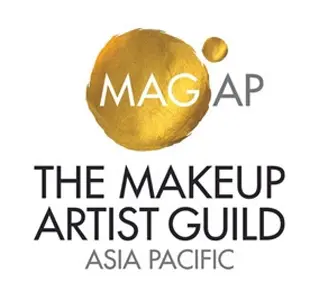Makeup is more than just applying products; it's about blending colours to enhance natural beauty.
One essential aspect that often goes unnoticed is colour theory. A basic understanding can change the way you view makeup, and how you apply it.
In this article, we'll explore the basics of colour theory in makeup, and how getting the right training in colour theory can enhance your skills and propel your career in makeup & beauty.
In this article:
- Colour theory explained
- How the colour wheel influences our makeup
- The role of skin undertones
- Master colour theory in makeup at OCA
- Comparing makeup courses
- Colour theory makeup FAQs
Colour Theory Explained
Colour theory is the art and science of understanding how colours interact and influence one another.
In the world of makeup, it’s about knowing which shades will enhance, complement, or neutralise others.
By mastering colour theory, makeup artists can create harmonious, balanced, and more beautiful makeup looks.
How the Colour Wheel Theory Influences Our Makeup
The colour wheel is a visual representation of how colours relate to each other.
In makeup, it helps professionals decide which colours will complement a person’s natural tones.
For example, opposite colours on the wheel – such as blue and orange – are complementary.
This means that if someone has blue eyes, an eyeshadow with hints of orange or bronze can make the eyes pop.
The colour wheel is pivotal in makeup, guiding harmonisation choices:
- Complementary Colours: Opposites on the wheel, like red and green. When used in makeup, they provide striking contrasts, such as vibrant mascara against a neutral face.
- Analogous Colours: Colours side by side on the wheel, like yellow to green. They give a balanced look, suitable for subtle day makeup.
- Triadic Colours: Three evenly spaced hues on the wheel, e.g., red, blue, yellow. They produce dynamic makeup looks but require careful balancing.
- Monochromatic Colours: Shades of a single hue, resulting in a cohesive, refined look, like the popular latte look with nudes and bronzes.
The Role of Skin Undertones in Colour Theory
Understanding skin undertones – whether they are cool, warm, or neutral – is paramount in choosing the right foundation or concealer.
Undertones—warm, cool, or neutral—dictate the foundation shade that will meld with your skin flawlessly. Pairing the wrong undertone with an incompatible foundation brush can lead to a disjointed or ashy look.
- Warm Undertones: With hints of yellow, peach, or gold, individuals should lean towards foundation shades labelled "warm" or "golden."
- Cool Undertones: Identified by pink, red, or blue hues, the ideal foundation carries "cool" or "rosy" labels.
- Neutral Undertones: A mix of both warm and cool, those with neutral undertones have flexibility in foundation shade choices.
Colour theory and skin undertones can also guide the choice of eyeshadows, lipsticks, and even blushes.
For example, someone with warm undertones might find earthy shades like browns and oranges more flattering than blues or purples.
Master Colour Theory in Makeup at OCA
Whether you're aiming to refine your colour theory skills or just starting out, OCA offers courses tailored for every stage of your journey. Our Makeup Artistry Course Bundle + Kit and Makeup Fundamentals Masterclass are the perfect platforms to ignite or elevate your passion and learn the fundamentals of colour theory in makeup.
If you're eyeing a concise introduction to the world of makeup, our short courses are the way to go – such as our Apply Makeup Masterclass.
But for those who envision a future in the beauty business, our comprehensive Beauty Business Bundle, comprising 12 micro-courses and a free makeup tool kit, is the ticket to advanced mastery.
With seasoned Australian mentors to guide, OCA makes the path to becoming a makeup artist both enriching and straightforward. Your makeup journey deserves the best start, and OCA is here to deliver.
Online Courses Australia Beauty Courses Comparison
|
Feature/ Criteria |
Beauty Business Bundle + Kits |
Eyelash Extension Course Bundle |
Makeup Artistry Course Bundle |
Makeup Fundamentals Masterclass |
Apply Makeup Masterclass |
Eyelash Lift & Tint Course |
|
Study Hours |
440 |
80 |
200 |
60 |
80 |
25 |
|
Main Focus |
Comprehensive Beauty Business |
Eyelash Extensions |
Comprehensive Makeup Artistry |
Makeup Basics |
Applying Makeup |
Lash Lift & Tint |
|
Kit Included |
Yes (Value: $1400AUD) |
Yes (Value: $700AUD) |
Yes (Value: $700AUD) |
No |
No |
Yes (Value: $450AUD) |
Colour Theory Makeup FAQs
Why is colour theory crucial in OCA's online makeup courses?
Understanding colour theory is foundational in OCA's curriculum. It ensures that students can select and blend makeup shades harmoniously, enhancing a client's natural beauty and complementing their skin tone.
How does OCA approach colour theory differently than other institutions?
OCA blends theoretical knowledge with hands-on application. Our courses are backed by Australian industry experts who bring real-world experience to the table. Plus, with our interactive modules and practical exercises, students gain a well-rounded understanding.
Can I apply the colour theory knowledge from OCA's courses to real-world scenarios?
Absolutely! OCA's focus is on practical application. What you learn about colour theory will be directly applicable in professional makeup settings, helping you create harmonious and flattering looks for clients.
- Career Development





















